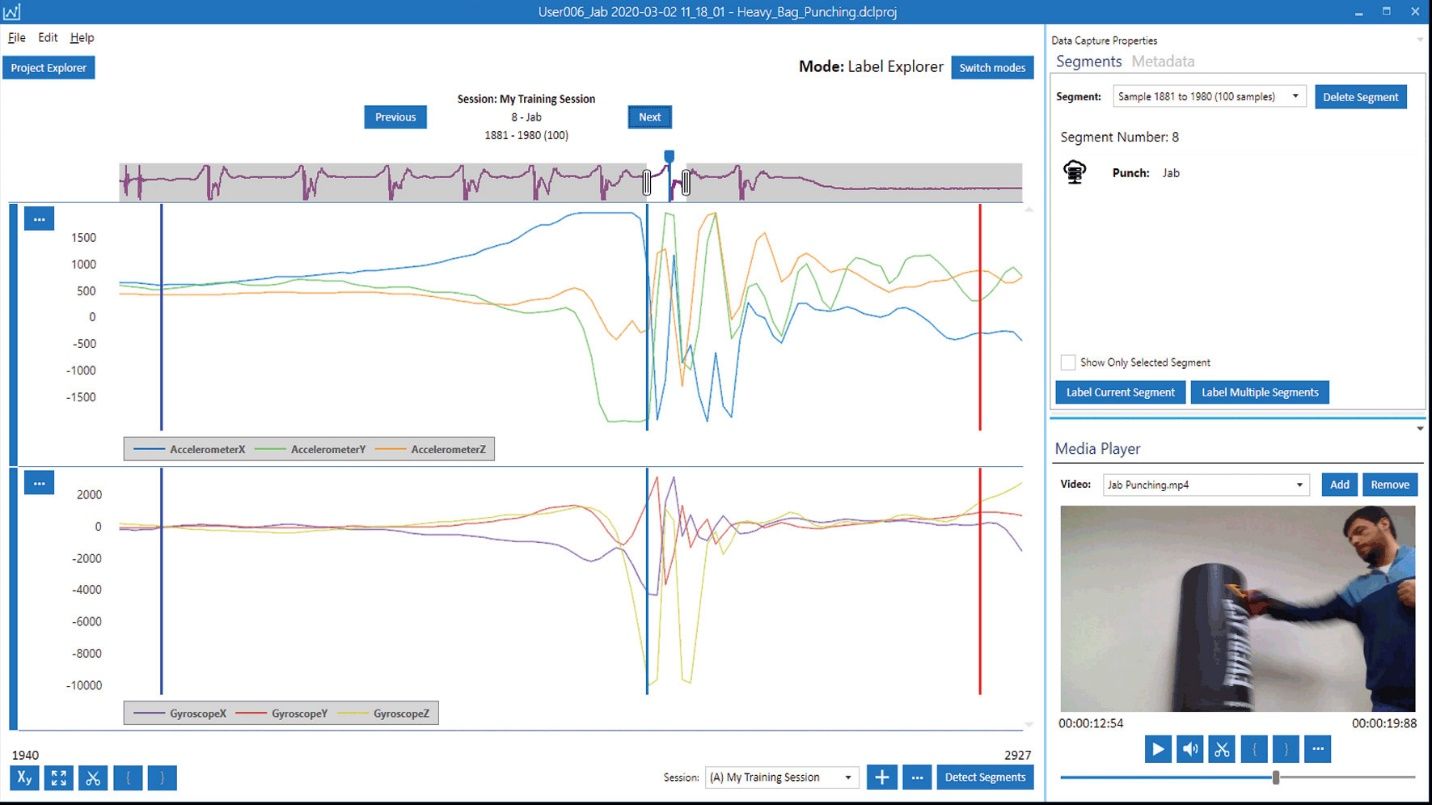Project update 5 of 5
Introducing the SensiML AI Toolkit
by Chris RBelow is a guest post by the CEO of SensiML, a QuickLogic partner specializing in embedded machine learning. As for fulfillment, we finally got the paperwork sorted and will start shipping by September 23rd. You will receive a shipping confirmation email with a tracking number when your order ships. Thank you for your patience!
When QuickLogic launched the QuickFeather campaign earlier this summer, it referenced the coming integration of the SensiML AI toolkit with this uniquely flexible and open source QuickFeather dev kit. We are pleased to report the integration is complete and we are making SensiML Analytics Toolkit available as a specially priced bundled option for Crowd Supply QuickFeather backers.
SensiML = Sensors + Machine Learning… at the IoT Edge
Anyone who has ever created sensor data processing applications for embedded microcontrollers knows this activity can be extremely challenging and time-consuming. True, while simple threshold rules (like a temperature alarm or linear motion travel limit) can be handled with a single IF...THEN, the more interesting problems in embedded sensor processing require much more; and typically demand far greater attention to algorithm efficiency than cloud-based machine learning since computing resources, memory, and power are often quite limited.
The alternative is to forego building intelligence intro the embedded processor and use the IoT edge device as simply a data acquisition node to capture and forward raw sensor data for processing elsewhere (cloud, PC, smartphone, etc.). This "dumb" IoT node workaround is acceptable in some use cases, but more often is the case where the need for real-time responsiveness, low network utilization, and/or data privacy demand local processing at the extreme edge. In most cases, autonomous smart devices having edge inferencing built-in will provide a better application performance and user experience overall.
Just a few examples of applications for this type of sensor processing include:
- Audio event recognition (e.g., smart security sensor that detects and reports glass breaking, gunshots, dog barks)
- Voice command/control/wake (e.g., "Ok Google...," "Alexa...," "Stop," "Start")
- Gesture detection
- Motion recognition (e.g., running, walking, cycling, crawling, climbing)
- Signal analysis (e.g., EKG interpretation, sports physiology form analysis, electrical load recognition)
- Predictive maintenance (e.g., rotating machinery vibration analysis, frequency analysis, wear rate regression)
- Automation and process control (e.g., cycle counts, motion pattern matching)
If your application calls for any of the above or similar pattern-recognition type classification and the performance of edge sensor processing, then SensiML may be just the solution for your project.
How does SensiML work?
Whereas traditional methods for constructing embedded sensor processing algorithms rely largely on time-intensive data science, signal processing expertise, and hand-coded optimization, SensiML automates the creation of sensor processing algorithms by training machine learning algorithms by example using labeled training data you provide within the tool. In this way, your efforts can be focused on the application logic and data interpretation outcomes rather than the nuances of AI and efficient embedded code implementation.
Using the Data Capture Lab component of SensiML Analytics Toolkit, you collect example sensor data and then label this data with the help of toolkit video synchronization, predictive auto-labeling, and metadata annotation that can be used to further segment data during model creation.
Following this step, you can rapidly create library or binary code for the QuickFeather ready for flashing to the device for test once you are satisfied with the predictive emulation results within the development tool. From start to finish, creation of working predictive algorithms that run locally on the QuickFeather can be built in a matter of hours once you have created and labeled a training dataset.
Crowd Supply Offer
We are offering a bundled option to backers of the QuickFeather open source IoT dev kit, that includes both the QuickFeather dev kit and a license to SensiML Starter Edition allowing you to build smart IoT sensor algorithms quickly and easily with this kit.
SensiML Starter Edition includes:
- Single user license to the SensiML AI cloud for uploading and building SensiML Knowledge Packs (autonomous IoT edge firmware that processes and provides pattern recognition output from complex time-series sensor data)
- Ability to create multi-sensor algorithms using onboard or external sensor inputs up to 100 ksps cumulative data rate.
- Direct capture of sensor data from QuickFeather dev kit into SensiML Data Capture Lab (requires a PC and Windows 10 OS) for creating a custom machine learning training dataset
- Ability to import existing or externally acquired data into SensiML using our CSV import wizard
- Sample datasets and models for use as tutorials to quickly learn the toolkit's use
For more information on SensiML Analytics Toolkit, visit our website at https://sensiml.com. If you’ve already placed your QuickFeather order and would like to upgrade to the QuickFeather + SensiML AI Bundle, contact Crowd Supply support.
SensiML Data Capture Lab
Collecting 6-axis accel/gyro sensor data for boxing punch recognition application
SensiML Analytics Studio
Showing graphical visualization of algorithm performance results for automatically created AI model
SensiML Data Depot
A growing repository of example datasets across a range of IoT sensor applications








